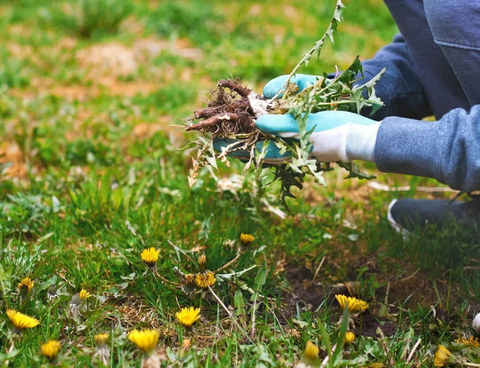Why Drip Irrigation is a Must for Your Garden
In today’s world, where water conservation and garden efficiency are more important than ever, drip irrigation has emerged as a game-changing solution for gardeners. Whether you're a seasoned horticulturist or a green-thumbed beginner, understanding how to manage water resources effectively is key to a thriving, sustainable garden. Drip irrigation is one of the most effective ways to nourish your plants with precision, providing them with the right amount of water where they need it most—at the roots. Not only does this improve plant health, but it also saves you time, effort, and valuable water.The following content also has some reference value for raised garden beds.
Understanding the Basics: What is Drip Irrigation?
Drip irrigation is a method of delivering water directly to a plant’s roots through a network of tubes, pipes, and emitters. Unlike traditional sprinkler systems that spray water over the entire garden, drip irrigation focuses water directly where it is needed, minimizing waste and ensuring each plant receives an adequate supply. This system is typically laid out along garden beds or in rows, allowing for controlled and efficient water delivery. The result is a healthier, more productive garden with fewer water-related issues.

How Drip Irrigation Works: The Science Behind Efficient Watering
At the core of drip irrigation is the principle of slow and steady water delivery. Water is released drop by drop, which is a far more efficient way to hydrate plants compared to the rapid runoff typical of sprinkler systems. Each drip emitter is designed to release water at a controlled rate, ensuring it soaks deeply into the soil, reaching plant roots without flooding the surrounding area. This process not only prevents water waste but also helps maintain the soil's structure by reducing erosion and nutrient leaching. The slow absorption allows plants to better retain moisture, promoting healthier growth.
Drip Irrigation's Advantages: Why the Investment Is Worth It
Investing in a drip irrigation system is one of the best decisions any gardener can make. Its advantages far outweigh the initial setup costs, especially in terms of long-term savings and efficiency. The system ensures precise water delivery, reducing water waste and leading to lower utility bills. Additionally, it’s an environmentally friendly solution that promotes sustainability. With the right setup, drip irrigation can increase crop yields, reduce plant stress, and lower the risk of fungal diseases by minimizing moisture on foliage.
Water Conservation: How Drip Irrigation Saves Water
Water conservation is more crucial now than ever, and drip irrigation is a significant contributor to reducing water wastage. By delivering water directly to plant roots, this system ensures minimal evaporation or runoff. When compared to conventional watering techniques, drip irrigation can save up to 50% on water consumption. It eliminates the waste associated with over-spraying and runoff, allowing gardeners to use water more efficiently. This not only benefits the garden but also the planet, especially in areas where water is a limited resource.
Healthier Plants with Drip Irrigation: The Key to Stronger Roots
One of the most significant benefits of drip irrigation is its ability to promote stronger, healthier root systems. Since water is delivered directly to the root zone, plants have better access to moisture, enabling them to develop deeper, more robust root systems. This strengthens the plant’s ability to access nutrients and enhances its overall resilience against environmental stressors. Healthy roots lead to healthier plants, which are more capable of producing bountiful fruits, vegetables, and flowers.
Reducing Weeds and Disease with Drip Irrigation
Drip irrigation can also help minimize the growth of weeds and the spread of diseases. Traditional watering methods, like sprinklers, saturate the entire garden, creating a perfect environment for weeds to thrive. Drip irrigation, however, targets only the plant roots, leaving the surrounding soil dry. This not only reduces weed growth but also helps to prevent the spread of fungal diseases, which are often exacerbated by excess moisture on leaves and stems. With less water on non-target areas, the chances of mold, mildew, and other plant diseases decrease significantly.
Precision Watering: How Drip Irrigation Targets Plant Roots
Precision is the hallmark of drip irrigation, and this is exactly what sets it apart from other watering methods. By focusing on delivering water precisely to where it is needed, this system reduces the likelihood of overwatering or underwatering. Each emitter is designed to release a specific amount of water, which can be customized according to the needs of different plant types. This tailored approach ensures that each plant receives the right amount of hydration, leading to better overall plant health and more consistent growth.
Maximizing Yields: Drip Irrigation’s Role in Increasing Harvests
The efficiency of drip irrigation translates directly into improved yields. It supports plants' growth and well-being by maintaining steady moisture levels. Drip irrigation reduces the likelihood of water stress, which can often result in poor fruit or flower production. Consistent watering ensures that the plant receives adequate hydration during its critical growth stages, leading to higher yields and more vibrant crops. Whether you're growing vegetables, flowers, or fruits, a well-installed drip system can lead to a bumper harvest every season.
Drip Irrigation vs. Sprinkler Systems: Which One Wins?
When comparing drip irrigation to sprinkler systems, the latter is often found lacking in efficiency. Sprinklers apply water evenly over a wide area, leading to significant water wastage due to evaporation and runoff. Drip irrigation, on the other hand, focuses on the root zone, using water more conservatively and efficiently. While sprinklers may cover a larger area more quickly, drip irrigation is far superior in conserving water, reducing plant diseases, and promoting stronger, healthier plants. The choice between the two ultimately depends on your specific gardening needs, but for precision and sustainability, drip irrigation often comes out on top.
Setting Up Drip Irrigation: A Beginner’s Guide
Setting up drip irrigation might sound complicated, but it’s easier than you think. With the right tools and instructions, even beginners can successfully install a drip system in their garden. The first step is to assess your garden’s layout and decide where to place your tubing and emitters. Make sure to measure your garden area and plan the placement of each component carefully to ensure optimal coverage. With some basic tools and a little time, you can have your drip system up and running in no time.

Essential Tools and Materials for Drip Irrigation Setup
Make sure you have all the equipment and supplies you'll need before beginning your installation. Common components of a drip irrigation system include tubing, emitters, connectors, pressure regulators, filters, and stakes. Depending on the size of your garden, you might also need a timer, a water source, and a backflow preventer to keep the system functioning smoothly. By assembling everything in advance, you can streamline the setup process and ensure you don’t run into any last-minute issues.
Step-by-Step: Installing Your Drip Irrigation System
Installing a drip irrigation system can be broken down into several easy steps. Begin by laying out your tubing in the garden, following the planned path for water distribution. Attach emitters to the tubing at the desired intervals, ensuring they are positioned near the root zone of each plant. Connect the tubing to your water source, making sure to include a filter and pressure regulator to ensure optimal water flow. Finally, test the system to ensure it’s working as expected. With patience and attention to detail, your drip system will be set up and ready to deliver efficient watering to your garden.
Tips for Positioning Drip Lines for Maximum Efficiency
The placement of your drip lines is crucial for maximizing water efficiency. Make sure to position the drip lines in a way that targets the root zone of each plant, ensuring they receive the water they need. For plants with deep root systems, position the drip lines slightly further from the plant to encourage deep watering. For shallow-rooted plants, closer placement is ideal. Additionally, avoid crossing lines or overlapping water distribution areas, as this can cause inefficiency and water wastage.
Troubleshooting Common Drip Irrigation Issues
Even the best drip irrigation systems can encounter problems from time to time. Common issues include clogged emitters, leaks in the tubing, and uneven water distribution. Regularly inspect your system for signs of wear and tear, and address any clogs promptly by cleaning the emitters or replacing damaged parts. Leaks can often be fixed by re-sealing connections or replacing cracked tubing. By staying vigilant and performing routine maintenance, you can ensure that your system continues to work at its best.
Maintaining Your Drip Irrigation System: Best Practices
Maintaining your drip irrigation system is key to ensuring its longevity and efficiency. Make sure to clean your filters regularly to prevent clogs, and check emitters for blockages. During the off-season, remove any tubing or components that could be damaged by freezing temperatures, especially in colder climates. Regularly check for leaks or wear and tear, and replace any damaged components immediately to prevent water wastage. Proper maintenance will ensure your system continues to run smoothly for years to come.
How to Adjust Your Drip System for Different Plant Types
Different plants have different watering needs, so adjusting your drip system to accommodate these requirements is important. For thirsty plants like tomatoes and cucumbers, increase the water flow by using emitters with larger outputs. For drought-tolerant plants like succulents, reduce the flow to avoid overwatering. Additionally, monitor your plants regularly to assess their hydration levels, and make adjustments as needed. A little tweaking can make a huge difference in plant health and overall garden success.
The Role of Mulch in Enhancing Drip Irrigation Efficiency
Mulch is a powerful ally when it comes to optimizing drip irrigation. When applied around the base of plants, mulch helps retain moisture in the soil by reducing evaporation. This means your drip system doesn’t have to work as hard to maintain soil moisture levels, leading to greater efficiency. Mulch also helps to keep the soil temperature more stable, which is crucial for plant health. For best results, apply a thick layer of organic mulch, such as straw or wood chips, around your plants.
Drip Irrigation for Raised Beds and Containers: What You Need to Know
Raised beds and containers offer unique challenges when it comes to watering, but drip irrigation can be a perfect solution. In these setups, it’s essential to ensure that the water reaches the plant roots evenly, as the soil in containers and raised beds tends to dry out more quickly than in ground gardens. For raised beds, lay drip lines on top of the soil, ensuring they’re placed directly over the root zone of your plants. In containers, use micro-sprayers or smaller emitters to provide consistent hydration.
Optimizing Drip Irrigation for Indoor Gardens and Greenhouses
Indoor gardens and greenhouses present unique watering challenges, but drip irrigation is equally effective in these settings. In a greenhouse, where humidity and temperature can fluctuate, maintaining consistent moisture levels is vital for plant health. By setting up a drip irrigation system with a timer, you can ensure that your plants are watered automatically at specific intervals, preventing overwatering or underwatering. Similarly, for indoor plants, smaller emitters or drip stakes can be used to maintain hydration without creating a mess or waterlogging.

Transform Your Garden with Drip Irrigation
Drip irrigation is not just a tool for watering; it’s a transformative approach to gardening. By conserving water, promoting healthier plants, and improving overall garden efficiency, drip irrigation unlocks the full potential of your outdoor space. Whether you’re looking to boost your crop yields, reduce maintenance efforts, or simply create a more sustainable garden, drip irrigation is an investment that pays off season after season. With the right setup and a little attention to detail, your garden will thrive, and you’ll enjoy the satisfaction of knowing that you’re watering smarter, not harder.









